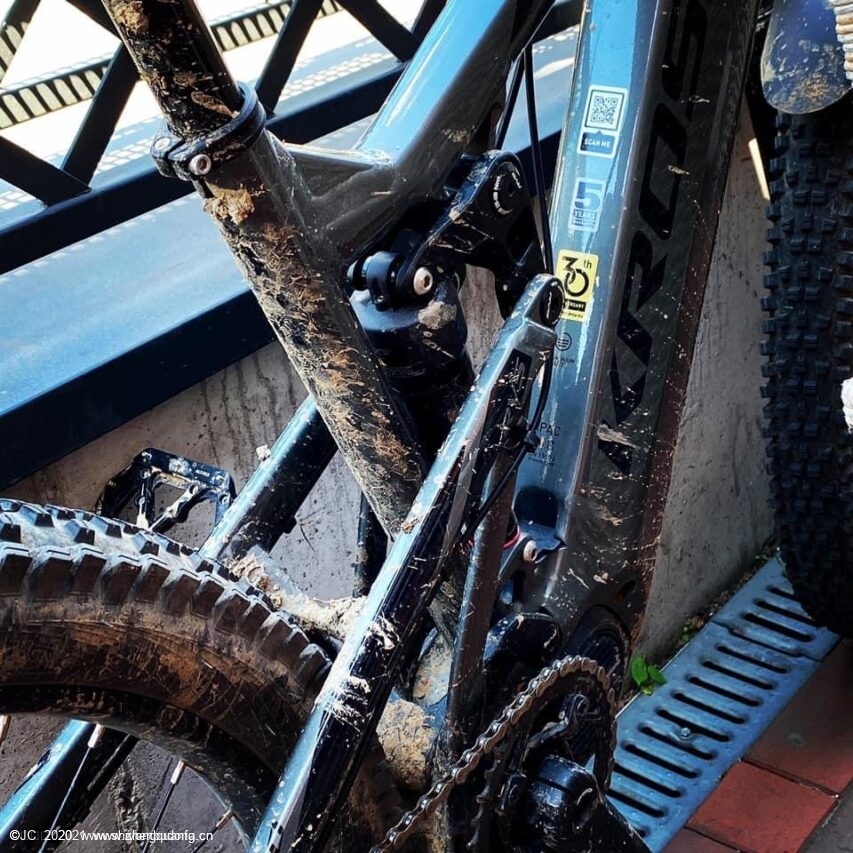Some of my own thoughts on Taiji Practical Method after mountain biking.

Returning to biking after Chen Taijiquan Practical Methon training is a whole new experience !
Practical Method Taiji theory makes us more aware of what is happening around us.
Holding the steering wheel. Palms are pressed tightly from the little finger with stretch. Just like catching an opponent or training with taiji chan gun (http://practicalmethod.com/2010/11/taiji-chan-gun-online-video/)
The rest of the arm is relaxed to the shoulder. The middle joint is relaxed (1-3). We have a strong triangle where the two ends are locked and the “third line” is invisible but true.
During difficult downhill, shoulders and elbows sink naturally if we want stability.
During sharp turns, we need a strong connection between the foot and the hand. The abdomen must be strong and aligned, the tailbone pulled tight. (once Chen Xu almost grabbed my spine through my stomach, i remember that feeling and i try to keep it like that) Center stable when tilted. There is a separation.
The back is blocked. We are in a strong position. Like leaning against a wall. We have to use non-direct force if we want to turn. It’s a nice feeling because we use the elbow like a twisting towel. The steering wheel has a locked center, so we feel the rotation immediately, if we need more, the belly must suck in.
Taiji turned biking into a game of searching a compensating for various forces.
Everyone always says Taiji is binary. 0/1 unfortunately I still don’t understand why.
This model fails in my experience.
All my experience and models are like -1, 0, 1.
Always three point, counting, dimmension, triangle …
When we have two points 0 and 1, we really have nothing.
We don’t have space, we can’t compensate or even move because we need third point to switch.
Even in computer system there is 0 as state, 1 as state and null as state of no state
We need a function of a differential system.
The strength is not in the lake but in the waterfall.
 :18963387833
:18963387833

Some of my notes from applying taiji principles to my table tennis game:
Accuracy training: Divide left and right, front and back. Work on aiming the ball into each half/quadrant. More divisions for more precise training.
Positive and negative circles roughly correspond to strokes for topspin and backspin. Out with Hand and in with elbow are key to transferring power to the ball. Contact angle is roughly 45 degrees to the path of the ball, to catch and peel the incoming force to return on your intended path.
Inverted stroke (drop shot) change from Out with Hand to in with elbow.
The torso has to match the contact point. The backhand stroke should not reach across the midline; the waist should turn to bring the hand into alignment.
Move the feet, don’t reach. Keep the vertical line and step to bring the contact point into alignment with the stroke. When you follow the principles, every position can be continued from as a positive and/or a negative circle.
Training: You can practice control by keeping everything the same and changing one thing.
Moments of Taiji Connection
When you immerse yourself in Taijiquan practice for long enough you might one day suddenly find that life exhibits in all sorts of ways the principles that you have been learning and trying to follow…
Or, the other way around, when you have toiled in your profession for long enough and you first listen to a master explaining the principles underlying Taijiquan you might immediately find a close connection between what you do and what Taijiquan is about.
When was your first moment of Taiji connection with ordinary living or with your professional activities?
Share yours with a photo and heading “Moments of Taiji Connection”.
Shared below, is one of Damian Jagosz’s bright Taiji moments. (Damian is an ardent Chen Style Taijiquan Practical Method practitioner in Poland.)